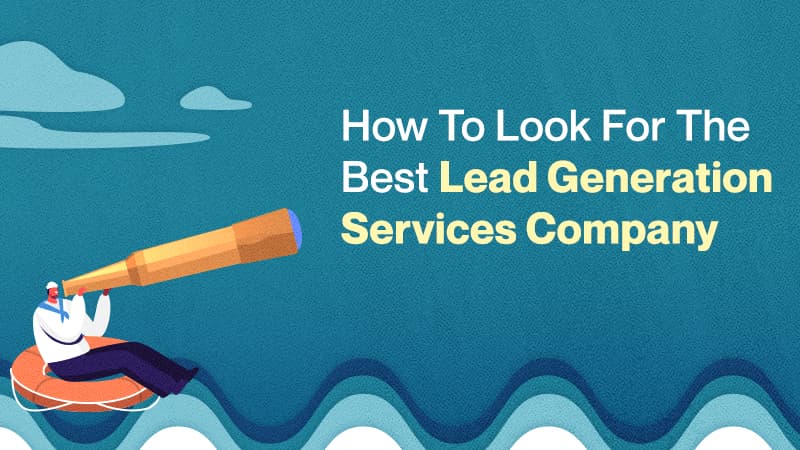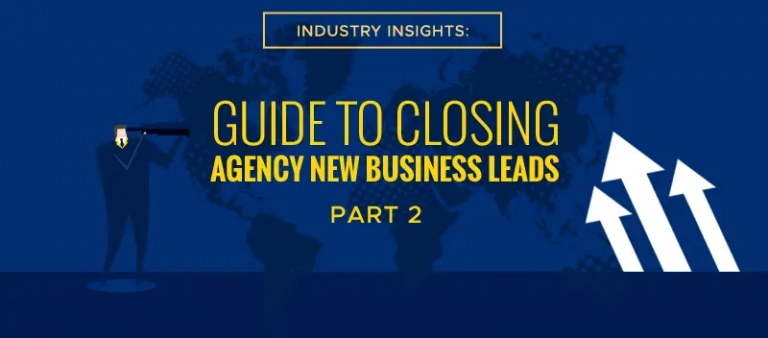Lead generation can fail.
It’s critical to understand what could go wrong so that organizations can prepare accordingly. If you see something wrong in your current lead generation strategies, maybe it’s high time for you to invest wisely and partner up with the right lead generation services provider.
In this guide, we take a look at the most common reasons why lead generation fails by looking at possible solutions to prevent it from happening.
Setting Unrealistic Expectations
Let’s start at the beginning: expectations.
All expectations and objectives have to be S.M.A.R.T. which means that at the very least, they have to be specific, measurable, attainable, realistic, and timely.
One can’t target 500 leads a week if they’re bound to only three geographical cities with a limited marketing budget.
That’s just not going to happen.
Failure to set realistic expectations will lead to disappointments or the overcompensation of a lead generation team, and this will lead to systemic failures that could derail a project.
Make sure that all expectations are agreed to and specific KPIs are set before lead generation is started.
Related: 7 Actionable Tips to Better Manage Outsourced Marketing Campaigns
Wrong Target Profiles
One of the major reasons why even the most carefully thought-out lead generation fails is because of the wrong audience.
Wrong target customer profiles — or worse, the wrong understanding of the preferences of your customers — can render your campaigns ineffective.
The way to fix this is to do your research and analyze the past habits of your target customers. Using a data-backed approach, your team should be able to predict their reaction to your offer and create messaging that resonates with them.
This research process will also help your team determine if they’re targeting the right people, to begin with, and expanding already existing markets into new ones with opportunities for growth and expansion.
Related: A Step-by-step Guide to Building and Profiling the Right B2B Leads List
The Lack of Data
Data is critical in any marketing campaign.
This is the reason why growth hackers, lead generation experts, and marketing DMUs are so heavily reliant on data to make decisions. Data provides proof of concept and ensures that resources are being spent efficiently.
Let’s focus on the three common types of data you’ll need to start a campaign.
- Market data – this details the general habits and characteristics of individual markets and helps marketers set the tone for lead generation.
- Prospect data – this allows lead generation experts to better understand prospects and create personalized campaigns to target them.
- Feedback data – this is the data that is collected after an action is taken, think of it as monitoring data on the effectiveness of your campaigns.
If you miss out on just one of these points, you might miss out on a lot of potential leads.
Related: How to Build and Grow Your Marketing Database in 2021
Misalignment Between Sales and Marketing
Sales and marketing are two highly distinct but extremely codependent departments that need to be synchronized.
It’s easy for goals to be misaligned.
There has to be constant communication between these two departments to make sure that:
- Goals are in sync
- Sales provides feedback on the leads that marketing is bringing in
- Leads that are passed from marketing to sales are sales-ready
- Lead scoring is in effect
- Leads that are labelled cold are returned to marketing
Related: What is Smarketing? (And Why It’s Important)
Using One Medium or the Wrong Ones
Your customers aren’t just on one platform.
Without the adoption of omnichannel and multi-dimensional campaigns, lead generation could run the risk of not spreading their campaign wide enough to create a proper buyer journey.
There are a lot of channels available for B2B lead generation and they all serve their own purpose in driving a single lead down the pipeline.
You can start the lead generation via email, nurture via LinkedIn, retarget via Facebook, and use sales discovery calls to drive the conversions.
However, there is also this caveat. Just because your leads are on one platform doesn’t mean it’s the proper platform to create the first touchpoint.
Properly plan what mediums you should be using and don’t stick to one, no matter how tempting it can be.
Related: Multi-channel Marketing Ideas You Need to Try to Generate More Leads
Buyer’s Journey Hasn’t Been Mapped Out
From the moment a prospect enters the funnel either through a passive or active lead generation campaign, their entire journey to conversion (and remarketing) should be properly mapped out.
This allows sales and marketing teams to predict reactions and get proper responses out.
The lack of a proper buyer journey can cause leads to go cold, and this is especially true in multi-touch campaigns.
This is also great for creating account-based experiences, which is becoming a staple of account-based marketing. Experiences are better at engaging the customer and getting the conversion that you want.
You can work really hard in creating multiple steps in lead generation, but things can go south if that journey is not mapped out.
Your Offer Might Not Be Compelling
Lastly, the problem might occur internally when the offer is not compelling enough.
This is usually an issue that relates to pricing or added services, but it can be fixed internally.
During the first few months of your lead generation campaigns, make sure that there is a robust feedback system where you can figure out if the offer or messaging is not compelling enough.
This will give your teams enough time to pull the offer and alter the messaging altogether.
The good news is that with proper preparation, lead generation doesn’t have to suffer a setback and these possible problems might not pose a threat. What’s important is to be prepared for what could go wrong, and have a proper feedback system in place.
Lead generation services are usually familiar with these problems and they have protocols in place to prevent or hammer them out earlier in the pipeline. Callbox for instance has a robust system for bringing in leads while mitigating issues like this.
Find out more today!




